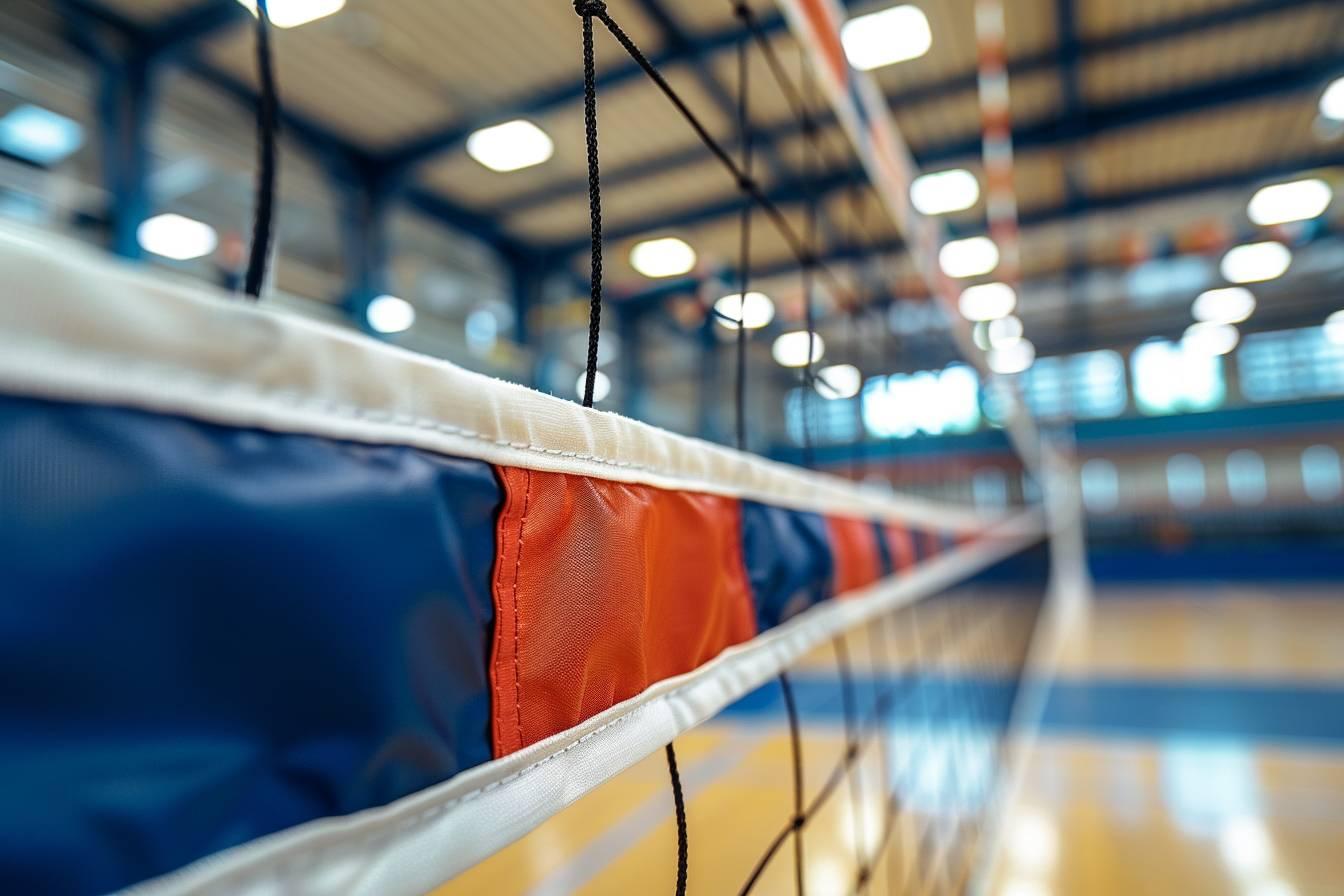🤸 To sum up :
This article explores the crucial role of volleyball antennas, focusing on their distinctive striped design and importance in gameplay.
- Volleyball antennas are 1.80-meter fiberglass rods with 10 alternating red and white stripes
- They define the legal crossing space for the ball and enhance visibility
- Antennas are integral to fair play across all levels of volleyball
- Proper maintenance of antennas ensures optimal performance and accurate calls
As volleyball enthusiasts, we know that precision and attention to detail can make all the difference on the court. One often overlooked aspect of the game is the volleyball antenna, a crucial component that ensures fair play and accurate ball placement. Today, we’ll dive deep into the world of volleyball antennas, focusing on their distinctive stripes and their significance in the game. 🏐
Volleyball antennas : The unsung heroes of the court
Volleyball antennas are more than just decorative elements on the net. These flexible fiberglass rods play a vital role in defining the legal crossing space for the ball during gameplay. As a fitness coach with a keen eye for technical precision, I’ve always been fascinated by how these seemingly simple components contribute to the integrity of the sport.
Let’s break down the key characteristics of volleyball antennas :
- Length : 1.80 meters (about 5.9 feet)
- Diameter : 10 millimeters (approximately 0.4 inches)
- Material : Fiberglass
- Quantity : Two antennas per net
These slender rods are positioned on opposite sides of the net, extending 80 centimeters (31.5 inches) above the top edge. This extension is crucial for players and officials to determine whether a ball has passed within the legal crossing space.
It’s worth noting that volleyball antennas are not exclusive to professional matches. They’re used across all levels of play, from amateur clubs to school teams, ensuring consistency in gameplay standards. 🏫🏆
The striped design : More than meets the eye
Now, let’s address the burning question : How many stripes are on the volleyball antenna ? The answer lies in the top 80 cm portion of each antenna, which features a distinctive pattern of alternating colors.
Here’s the breakdown of the stripe configuration :
- 10 stripes in total
- Alternating colors : Red and white
- Each stripe measures 10 cm (about 4 inches) in width
This striking color scheme serves a crucial purpose. The contrasting red and white stripes enhance visibility, allowing players, officials, and spectators to easily track the ball’s trajectory as it crosses the net. In the heat of a fast-paced rally, this visual aid can make all the difference in determining whether a play is in or out.
As someone who appreciates the finer points of sports equipment, I find the design of these antennas to be a perfect blend of form and function. The stripes not only add a touch of visual appeal to the court but also serve as a practical tool for maintaining fair play. 🔴⚪

The role of antennas in gameplay
Understanding the importance of volleyball antennas goes beyond merely counting their stripes. These seemingly simple attachments are integral to the game’s rules and dynamics. Let’s explore their significance :
- Defining legal play : The antennas are considered part of the net and help define the lateral boundaries of the crossing space.
- Ball trajectory : A legally played ball must pass between the antennas when crossing the net.
- Foul detection : Any ball that touches or passes outside the antennas is considered out of bounds.
- Visual reference : Players use the antennas as a guide for their serves and attacks, aiming to keep the ball within the legal crossing space.
It’s fascinating to note that these rules apply universally, whether you’re playing indoor volleyball or enjoying a beach volleyball match under the sun. The consistency in antenna usage across different volleyball formats underscores their importance in maintaining standardized gameplay. 🏖️🏟️
Volleyball equipment essentials
While we’ve focused on the antennas, it’s important to consider them as part of the broader volleyball equipment ecosystem. Let’s take a moment to examine how antennas fit into the overall setup of a volleyball court :
| Equipment | Description | Relation to Antennas |
|---|---|---|
| Net | Central barrier dividing the court | Antennas are attached to the sides of the net |
| Ball | Spherical object of play | Must pass between antennas when crossing the net |
| Court | Playing surface with boundary lines | Antennas help define vertical boundaries |
| Dress/Uniform | Player attire | Contrasts with antenna colors for visibility |
As a fitness coach who values a holistic approach to sports, I always emphasize the importance of understanding how each piece of equipment contributes to the game. The antennas, with their distinctive stripes, are a perfect example of how even small details can have a significant impact on gameplay and adherence to rules.
Maintaining volleyball antennas for optimal performance
To ensure fair play and accurate calls, it’s crucial to maintain volleyball antennas in top condition. Here are some tips for keeping these essential components in prime shape :
- Regular inspection : Check for any bends, cracks, or fading in the striped pattern
- Proper storage : Keep antennas in a protective case when not in use
- Gentle handling : Avoid rough treatment during setup and takedown
- Timely replacement : Replace antennas if damage affects their straightness or visibility
Remember, well-maintained antennas contribute to a smoother game experience for everyone involved. As someone who appreciates technical precision in sports, I can’t stress enough how important it is to pay attention to these details. 🛠️💪
In conclusion, the volleyball antenna with its 10 distinctive red and white stripes is a prime example of how thoughtful design can enhance fair play in sports. From its role in defining legal ball trajectories to its universal use across different volleyball formats, this simple yet effective piece of equipment deserves our appreciation. The next time you step onto a volleyball court, take a moment to appreciate these unsung heroes of the game, standing tall and striped, ready to help ensure an exciting and fair match.



